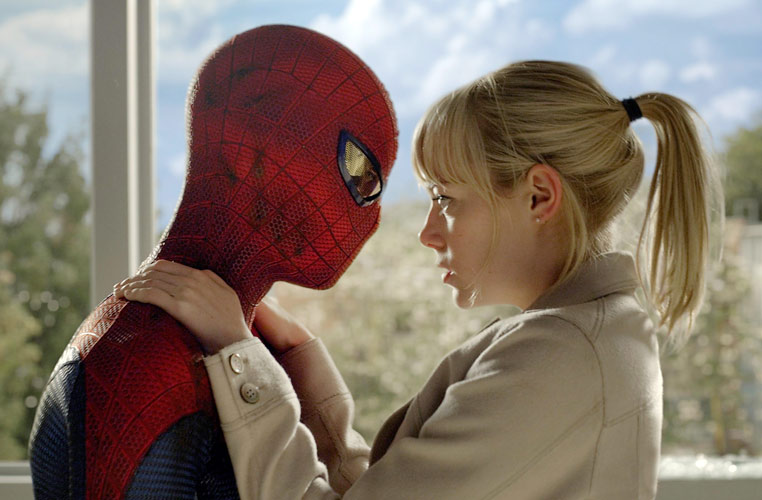
Directed by Mark Webb
Written by James Vanderbilt, Alvin Sargent, and Steve Kloves
USA, 2012
The Sony business model with The Amazing Spider-Man could not be clearer: every ten years or so, start the franchise over with up-and-coming new actors, get a few movies out of them, then begin again once those actors have decided to move on. As Robert Downey Jr. moves deeper into his fifties, it’s clear Marvel is paying close attention to what works for Sony and what doesn’t, so that they can apply it to Iron Man further on down the road. In this case, “what works” are the action scenes, and what didn’t work were the sharp story departures from Sam Raimi’s first film with the character.
Peter Parker (Andrew Garfield of The Social Network) is still a nerdy teenager living with Aunt May (Sally Field) and Uncle Ben (Martin Sheen), he still gets bitten by an enhanced spider, and he still catches thieves just like flies. However, for some inexplicable reason there’s a ton of backstory with Peter’s parents, insinuating that Richard Parker had some role in Peter’s obtaining spider-powers. It’s unnecessary – the character has plenty of familial angst with Uncle Ben’s death on his conscience, and doesn’t need more – and it bogs down many scenes, including the mid-credits stinger.
It’s not only the parental issue, either. Director Marc Webb ((500) Days of Summer) has a habit of hitting certain character notes too hard when a light touch would do, and in fact was already done in Raimi’s Spider-Man. Raimi established Peter’s social awkwardness as effortlessly as having him walk down the aisle on a school bus, whereas Webb is as subtle as a savage beating from school bully Flash Thompson. There’s no sin in aiming for the same dramatic beats that Raimi did – those beats make the character what he is – but if it’s done unsubtly then it looks too much like laziness and imitation.
All of that becomes easier to tolerate once the web-slinging begins. The movies for this character have always been plagued with the problems of how to mix stuntmen and digital effects. The stuntmen were too much at risk of getting hurt, the digital effects looked a little too cartoony, and the lead actor also wanted a chance to show his face once in a while. Spider-Man 2 came close to solving the problems, but it seems that only now are they completely gone. The action is this film is fast, smooth, and easy to follow, mixing in the acrobatics and the snappy-patter dialogue that have always made the character fun in the comics. This film was a wonder to look at in 3D, and putting it alongside Prometheus suggests that people in Hollywood other than James Cameron are finally getting a grasp of how to add value to their films with the technology.
As the title character, Andrew Garfield is a bit of a mixed bag. He puts in a few too many nervous tics when talking to other characters, but he has perfect body language when alone. He has good chemistry with Emma Stone (excellent as Gwen Stacy), but none at all with Rhys Ifans as the villainous Dr. Curt Connors. The only thing he completely masters is the trademark Spider-Man wisecracking, which is great but is only a small part of the film.
It’s a shame to have to follow Raimi, one of Hollywood’s great masters of style; it was almost inevitable that Webb’s film would have more mistakes. If one were able to take that history away and study this movie on its own, The Amazing Spider-Man would be a serviceable summer blockbuster, with scintillating visuals hiding the most problematic flaws. It’s a fun film, although one hopes that it can clean up its story problems in the sequel.
Mark Young
As mentioned above, there is one mid-credits scene, although not a very good one. You don’t need to sit all the way through the credits.


